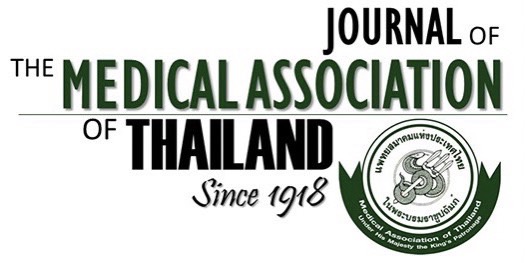Thoracic Epidural Anesthesia (TEA) with 0.2% Ropivacaine in Combination with Ipsilateral Brachial Plexus Block (BPB) for Modified Radical Mastectomy (MRM)
Petchara Sundarathiti, MD*, Koravee Pasutharnchat, MD*, Youwanush Kongdan, MD**, Pet-eng Suranutkarin, BSc (Nursing)*
Affiliation : * Department of Anesthesiology, Ramathibodi Hospital, Faculty of Medicine, Mahidol University ** Department of Surgery, Ramathibodi Hospital, Faculty of Medicine, Mahidol University
Background : Breast cancer is the 2nd most common tumors in Thai women. Until now, oncologic breast
surgeries are typically performed by general anesthesia (GA). However, GA cannot provide adequate post-
operative pain control and routine use of parenteral opioids aggravate postoperative sedation, nausea,
emesis, impaired oxygenation and depressed ventilation. Thoracic epidural anesthesia (TEA) is one of the
regional anesthetic techniques that can be done by using a low dose of local anesthetic in combination with
ipsilateral brachial plexus block (BPB) for axillary node dissection. TEA can provide a better pain relief
without potential paralysis of respiratory muscle and sedation.
Materials and Methods : Fifty ASA PS I-III patients undergoing MRM were randomly assigned to two study
groups of 25 patients each. In the TEA group, an epidural catheter was inserted at T4 to T5, and 10-15 ml of
0.2% ropivacaine was injected, then interscalene BPB was done with 8 ml of 0.2% ropivacaine. Anesthesia
was maintained with 5-10 ml of 0.2% ropivacaine per hour. GA was induced with 1 µg/kg of fentanyl followed
by 1.5-2 mg/kg of propofol and was maintained with sevoflurane and 70% N2O in oxygen. The authors
evaluated the adequacy of anesthesia, surgical condition, postanesthetic recovery, postanesthetic analgesia
and patients’ satisfaction.
Results : The demographic data was similar in both groups. The number of patients immediately arrived at
PACU with a sedation score of 1 was significantly greater in TEA group (p = 0.003) while the number of
patients with an Aldrete score of 10 was greater but not statistically significant (p = 0.25). The verbal rating
scale and analgesic requirement were significantly lower in the TEA group (p < 0.001 and p = 0.002
respectively). Patients’ satisfaction was greater with TEA than with GA (p = 0.014). Surgical condition was
similar in both groups.
Conclusion : The present study shows that TEA combined with BPB by using a low dose of 0.2% ropivacaine
is a safe and reliable alternative technique for MRM. It can provide not only effective anesthesia but also
better postoperative pain relief, faster anesthetic recovery and greater patient satisfaction than those of the
GA technique.
Keywords : Thoracic epidural, Mastectomy



